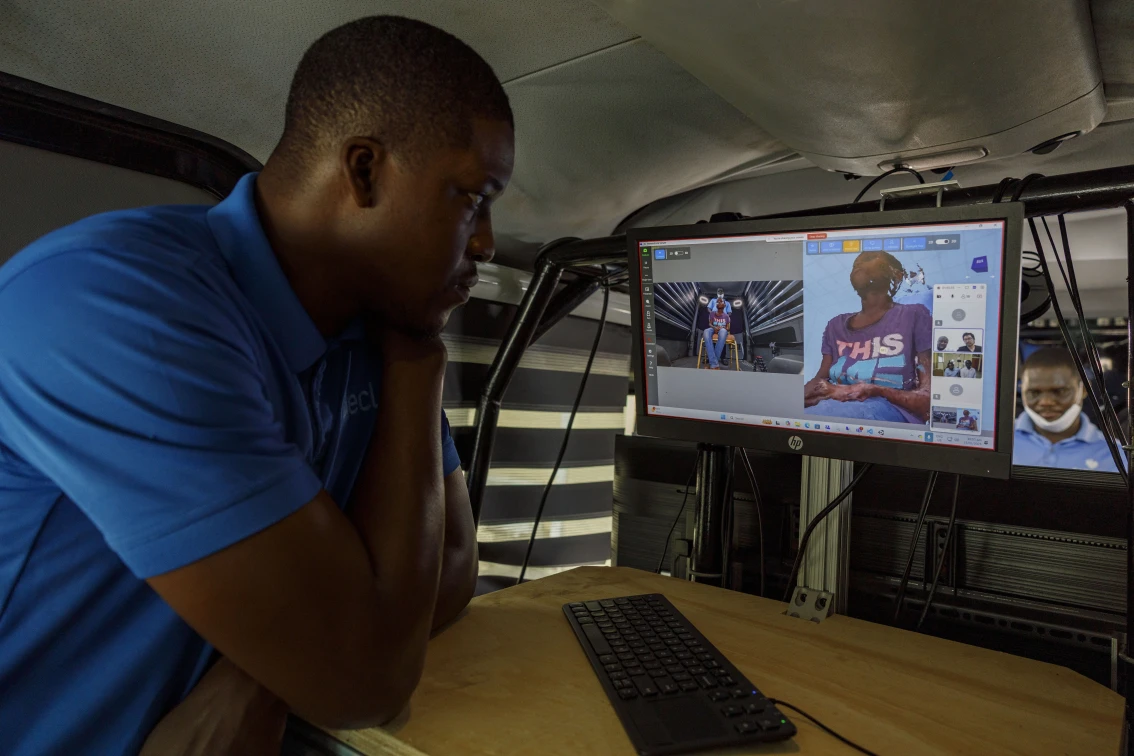
Koforidua, Ghana – March 30, 2025 – Ghana is leading a healthcare revolution with groundbreaking advancements in telemedicine. A new 3D telemedicine technology, developed by Microsoft Research in collaboration with local doctors, is being tested in Koforidua. This innovative approach promises to redefine the way medical consultations are conducted, especially for patients in remote and underserved areas.
Telemedicine in Ghana: A Healthcare Transformation
The introduction of 3D telemedicine in Ghana marks a significant milestone in the country’s healthcare landscape. By utilizing advanced 3D modeling, this technology enables doctors to create detailed virtual representations of patients, facilitating accurate diagnoses and treatment planning without requiring in-person consultations. This is particularly beneficial for rural communities where access to medical specialists is often limited.
How Telemedicine in Ghana Works
The 3D telemedicine system captures detailed patient data using high-definition imaging and biometric sensors. These data points are then processed to create an interactive 3D model of the patient. Doctors can view, rotate, and analyze these models in real-time, enabling them to assess conditions ranging from fractures to organ abnormalities. This level of precision is unprecedented in telemedicine, making Ghana a pioneer in adopting this cutting-edge technology.
Benefits of Telemedicine in Ghana
The deployment of telemedicine in Ghana offers numerous advantages:
1. Improved Accessibility: Patients in remote areas can now access specialist care without traveling long distances.
2. Cost Efficiency: Reduced need for physical visits minimizes transportation and consultation costs.
3. Enhanced Diagnostics: The detailed 3D models improve diagnostic accuracy, leading to better patient outcomes.
4. Time-Saving: Faster consultations mean patients receive timely interventions, crucial for critical conditions.
Challenges and Future Prospects of Telemedicine in Ghana
While the introduction of 3D telemedicine in Ghana is a game-changer, challenges such as limited internet connectivity, high initial costs, and the need for specialized training persist. However, ongoing investments in infrastructure and partnerships with tech giants like Microsoft aim to address these issues. As the technology becomes more accessible, the potential for scaling telemedicine across Ghana’s healthcare system is immense.
The Global Implications of Telemedicine in Ghana
Ghana’s success with 3D telemedicine could serve as a model for other developing nations. By demonstrating the feasibility and benefits of this technology, Ghana is positioning itself as a leader in digital health innovation. The initiative also highlights the importance of public-private partnerships in driving sustainable healthcare solutions.
Conclusion
The advancements in telemedicine in Ghana, particularly the adoption of 3D technology, represent a significant leap forward in healthcare delivery. By bridging the gap between urban specialists and rural patients, Ghana is setting a precedent for how technology can transform healthcare systems worldwide. As this initiative continues to evolve, it holds the promise of improving millions of lives and reshaping the future of medical care.
For further resources on the topic, click here.